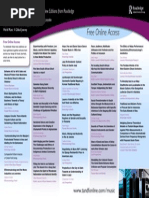Beck-depressions-inventar Fragebogen

Beck-Test / Beck-Depressions-Inventar (BDI) Der Beck-Test bzw. Das Beck-Depressions-Inventar in ein standardisierter Fragebogen zur Selbstbeurteilung des Patienten und dient der Feststellung des Schweregrades einer Depression. Das Beck- Depressions- Inventar (BDI. 101 montuno in pdf. Here you can fill out the depression test (Beck's Depression Inventory), which will help you figure out whether you have depression or you are close to it. Beck Depression Inventory.
INTRODUCTION This article presents a summary of self‐report adult measures that are considered to be most relevant for the assessment of depression in the context of rheumatology clinical and/or research practice. This piece represents an update of the special issue article that appeared in Arthritis Care & Research in 2003; the current review followed similar selection criteria for inclusion of assessment tools. Specifically, measures were selected based on several considerations, including ease of administration, interpretation, and adoption by arthritis health professionals from varying backgrounds and training perspectives; self‐report measures providing data from the patient or research participant's perspective; availability of adequate psychometric literature and data involving rheumatology populations; and frequent use in both clinical and research practice with adult rheumatology populations. This study was not intended to be exhaustive. Clinician‐administered, semistructured depression interviews requiring specialized training such as the Hamilton Rating Scale for Depression and Structured Clinical Interview for Diagnostic and Statistical Manual of Mental Disorders, Fourth Edition were not included.
Additionally, measures without sufficient use within rheumatology populations, such as the World Health Organization Composite International Diagnostic Interview depression module and the National Institutes of Health Patient‐Reported Outcomes Measurement Information System, were also not included in this review. Self‐report measures that have been included in this review are as follows: Beck Depression Inventory‐II, Center for Epidemiologic Studies Depression Scale, Geriatric Depression Scale, Hospital Anxiety and Depression Scale, and Patient Health Questionnaire‐9. Some of these measures have become integrated into routine clinical practice (as screening tools) in large managed‐care organizations, and these specifics have been included in this article. Included within each measure review are “additional references” that, while not cited within the review itself, may be of interest to the arthritis health professional who intends to use this instrument in their clinical practice or as part of a research study. As a general comment regarding any assessment of depression, while care was taken to include measures that require little training to administer and interpret, users without psychological background/experience in the management of clinical issues related to depression and crisis situations may need contingency plans for clinical supervision and/or referral sources. Any individual meeting or close to meeting the diagnostic criteria for depressive disorders needs appropriate management and/or referral, including being provided with referral options for different treatment approaches (pharmacologic and/or psychological). Additionally, suicide risk associated with depression must be taken seriously and promptly addressed.
Clinicians should have existing plans to immediately deal with anyone who is an imminent danger to self or others (including mandated reporting). Researchers and clinicians ought to identify behavioral health experts (e.g., psychologists, psychiatrists, social workers) who can assist with appropriately handling these types of crisis situations should they be identified in the context of rheumatology clinical or research environments. Versions include BDI‐I ( ), BDI‐IA ( ), BDI‐II ( ), and BDI for Primary Care (BDI‐PC), now known as BDI FastScreen for Medical Patients (BDI‐FS) ( ). The Beck Depression Inventory (BDI) has gone through multiple revisions. The original BDI instrument was developed in 1961 (BDI) ( ). Revision began in 1971 to improve wording of items, with the final revised instrument published in 1979 (BDI‐IA) ( ).
A technical manual for the BDI‐IA was published in 1987 and revised in 1993 ( ). The BDI‐IA, which is commonly referred to in the literature as simply “BDI,” is similar to the original, except the timeframe extends “over the past week, including today,” and some items were reworded to avoid double negative statements. The BDI‐II, published in 1996, contains a substantial revision of the original and revised BDI‐IA, and omits items relating to weight loss, body image, hypochondria, and working difficulty so that the assessment of symptoms corresponds to the Diagnostic and Statistical Manual of Mental Disorders, Fourth Edition (DSM‐IV) criteria ( ).
